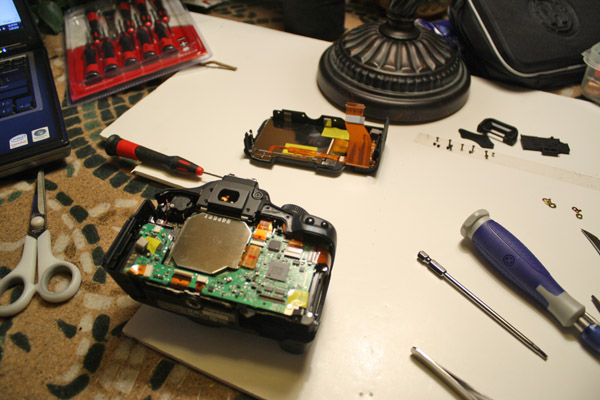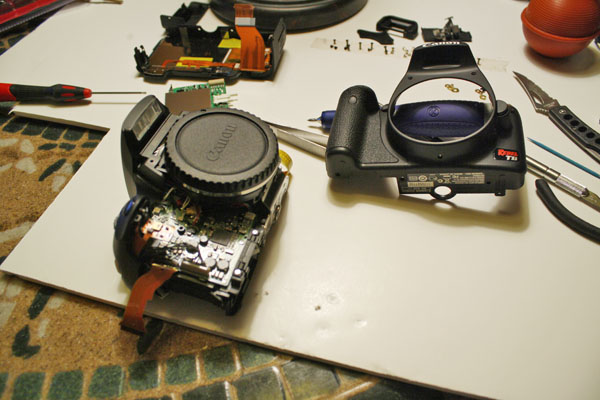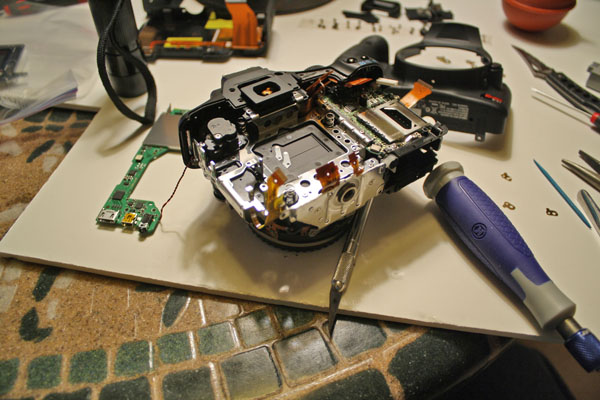Delicate surgery required...
General use photography has a different wave-length preference than astrophotography. The all-important hydrogen alpha line for most emission nebula is right around the 656nm part of the spectrum. (For some examples of emission nebula like the Horsehead Nebula and Orion Nebula, please see my portfolio on this website.) This line has been blocked by special filters in nearly every DSLR camera made today. I have read that this part of the spectrum was not preferred when it comes to portrait work and attaining accurate skin tones. That may or may not be true, but most manufacturers place filters in front of the sensor that block some or all of the hydrogen alpha wavelength.
Astrophotography can certainly be performed with any DSLR camera. Jerry Lodriguss has a wonderful article on the wavelengths important to astrophotography and the differences between a modified and un-modified camera and how to optimize imaging with each. For the most efficient use of a DSLR in astrophotography, one must modify the camera. This requires surgery by a skilled surgeon!

I am very fortunate to know just such a person. Brent Maynard, a friend and member or our local astronomy club the Ohio Valley Astronomical Society, is my local "DSLR Surgeon." Above you can see part of the process where he begins to modify a Canon T1i or 500D.
The most important part of the modification is removing one of the two filters that are placed in front of the imaging sensor. The filter to be removed only permits about 23% of the available hydrogen alpha light through to the imaging sensor. Remember that the emission nebulae we seek to image are emitting light at that part of the spectrum of light at 656nm. So it is vitally important to remove that filter to allow maximum gathering of those photons for the best images possible.

Brent is very skilled in electronics and has studied numerous hours on how to go about performing this delicate operation. It is certainly not an activity to simply jump into without a significant amount of study. I believe this camera will be Brent's fifth or sixth modification. He recently modified a 450D for me and it has been my primary imaging camera to date.
The entire goal of this procedure is to improve the amount of signal (the photons being emitted by the nebulae at the 656nm part of the spectrum) while reducing the amount of noise (light pollution, camera noise) and thus improve as much as possible the ratio of signal to noise.
One of the most appealing aspects of the 500D or T1i is the very high ISO capabilities while delivering low electronic noise. I hope to utilize the camera's high ISO of at least 3200 while employing a Hutech Light Pollution filter. My hope is that this combination will give me excellent signal (656nm spectrum allowed to pass to the sensor while light and air pollution are being filtered by the Light Pollution Filter) while reducing exposure times and eliminating the need to autoguide the astrophotography mount-that's an entirely different discussion.
So for now, I have two modified astroimaging DSLR cameras to take to the Winter Star Party next week. All thanks to my wonderful DSLR surgeon, Brent Maynard. Thanks Brent and hoping for some wonderful imaging condition in southern Florida next week.

